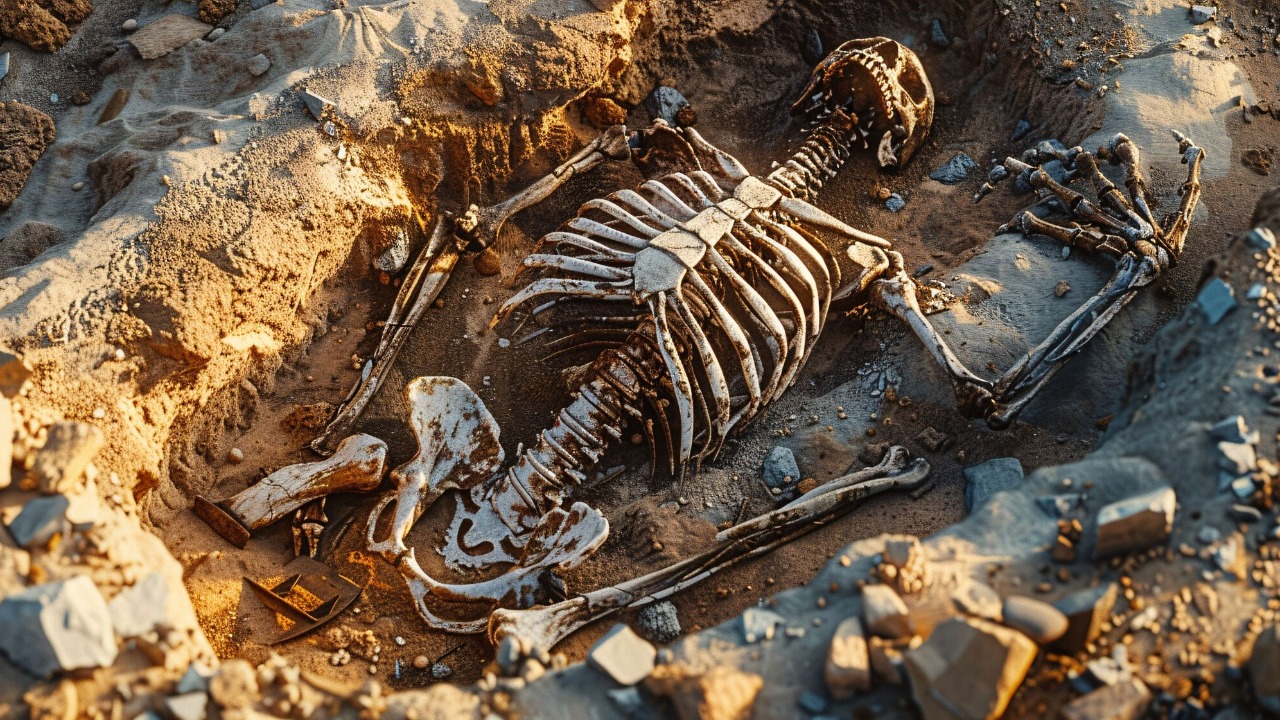
Archaeologists have made a significant discovery in Croatia, uncovering a well filled with the remains of seven individuals believed to be Roman soldiers who died in the Battle of Mursa in 260 CE. A recent study suggests these skeletons, found tightly packed into the well, likely represent soldiers from the Roman era due to their positioning and associated artifacts. This finding offers rare direct evidence of casualties from one of the Roman Empire’s pivotal civil war battles.
Site of the Discovery
The well containing the skeletons is located near the historical site associated with the Battle of Mursa in Croatia. Excavations revealed the remains of seven individuals packed tightly inside, suggesting a hasty disposal during or after the conflict. This method of burial indicates the urgency and chaos that likely accompanied the battle’s aftermath. The site’s proximity to ancient Roman military structures supports the interpretation of the well as a wartime repository for the dead, providing a tangible link to the events of the third-century crisis.
Archaeologists have noted that the well’s location and the manner of burial align with known Roman military practices. The discovery underscores the strategic importance of the area during the Roman Empire, as it was a significant military hub. The presence of these remains in such a context highlights the brutal realities of Roman warfare and the often-overlooked human cost of historical conflicts.
Historical Context of the Battle of Mursa
The Battle of Mursa, occurring in 260 CE, was a crucial event during the Roman Empire’s third-century crisis, characterized by internal strife and external threats. This battle was one of the bloodiest in Roman history, with significant losses on both sides, contributing to the empire’s instability during Emperor Gallienus’s reign. The conflict was part of a larger civil war that saw rival Roman armies clashing for control, reflecting the fragmentation of military loyalty within the empire.
The outcome of the battle temporarily favored Emperor Gallienus, but it also highlighted the deep divisions within the Roman military. The battle’s location in what is now Croatia underscores the region’s historical significance as a crossroads of military and political power. Understanding the Battle of Mursa provides insight into the broader challenges faced by the Roman Empire during this tumultuous period, including the difficulties of maintaining control over distant provinces and the constant threat of internal rebellion.
Evidence from the Skeletal Remains
Analysis of the seven skeletons shows signs of trauma consistent with battle wounds, such as fractures and cuts, aligning with the experiences of Roman soldiers in combat. These findings are supported by the presence of artifacts like weapon fragments and military gear, directly linking the remains to Roman soldiers from the 260 CE period. Such evidence provides a vivid picture of the physical toll that the Battle of Mursa exacted on its participants.
Radiocarbon dating and osteological examination confirm that the individuals died around the time of the Battle of Mursa, further solidifying the connection between the skeletal remains and this historical event. These scientific methods offer a precise timeline for the soldiers’ deaths, enhancing our understanding of the battle’s immediate impact. The combination of archaeological and scientific evidence paints a comprehensive picture of the soldiers’ final moments and the circumstances of their burial.
Implications of the Study Findings
The discovery of these remains offers new insights into the scale of casualties at the Battle of Mursa, with the seven soldiers representing a small but tangible fraction of the thousands lost. This study enhances our understanding of Roman disposal practices for fallen troops, suggesting that wells were used for mass burials in urgent wartime scenarios in Croatia. Such practices reflect the logistical challenges faced by Roman commanders in dealing with the aftermath of large-scale battles.
Further research on these remains could reveal details about the soldiers’ origins, diet, and health, contributing to broader narratives of the Roman Empire’s decline. By examining the isotopic signatures and other biological markers, researchers can gain insights into the soldiers’ geographic origins and living conditions, offering a more nuanced understanding of the Roman military’s composition. This information could shed light on the broader social and economic factors that influenced the empire’s ability to sustain its military forces.
The findings from this study not only enrich our understanding of Roman military history but also provide a poignant reminder of the human cost of war. As researchers continue to analyze the remains, they may uncover further details that illuminate the lives of these soldiers and the broader context of the Roman Empire’s struggles during the third century. The discovery serves as a testament to the enduring impact of historical events on the present, offering valuable lessons for understanding the complexities of past and present conflicts.
For more information, you can read the full articles on Live Science and La Brújula Verde.